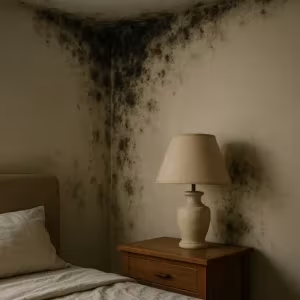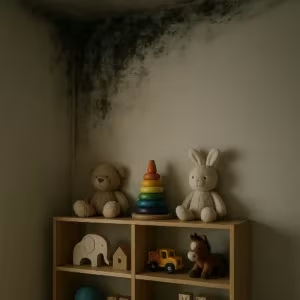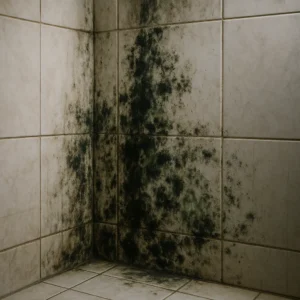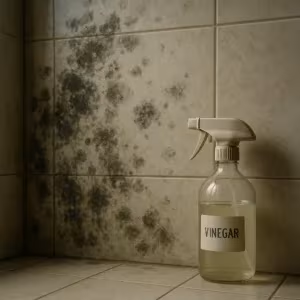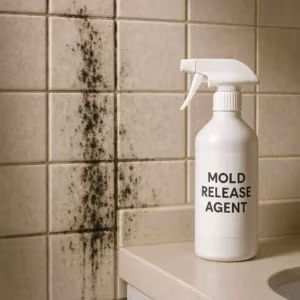Humidity-related mold growth is one of the biggest challenges for homes and buildings in the UAE. The region’s climate, with its high levels of moisture in the air, creates the perfect environment for mold to thrive. Mold is not only unsightly; it can also damage property and affect health by triggering allergies, asthma, and respiratory problems. Understanding why humidity leads to mold growth, how it spreads indoors, and what you can do to prevent it is essential for anyone living in a humid environment. In this article, we will look closely at the relationship between humidity and mold, the risks it brings, and the best strategies to keep your space safe and healthy.
Table of Contents
ToggleHow Humidity Leads to Mold Growth
Mold spores are everywhere around us, invisible to the eye and floating naturally in the air. On their own, they don’t cause problems until they land on a damp surface. When humidity levels rise above 60%, the air itself carries enough moisture to keep surfaces damp for longer periods of time. In a bathroom, kitchen, or even a living room cooled by air conditioning, condensation forms on walls, ceilings, and windows. This layer of moisture acts as a food supply for mold spores, which then begin to colonize. Over time, they spread across surfaces like wallpaper, grout, wood, or fabric. High humidity also slows down the drying of everyday spills or leaks, giving mold even more opportunity to grow unchecked.
Where Humidity-Related Mold Growth Happens

Different areas of a home or office are more vulnerable to humidity-related mold growth. Bathrooms, for instance, stay damp because of showers and poor ventilation, making tile grout and ceilings common breeding grounds. Kitchens often deal with steam from cooking, which collects on walls and cabinets. Bedrooms and living rooms with air conditioning may feel cool, but AC units themselves produce condensation, which can drip and create damp patches in hidden spots. Closets and storage spaces, where air circulation is minimal, also trap moisture and can quickly smell musty as mold grows on clothing or leather goods. Even building materials like drywall and insulation can harbor mold if indoor humidity remains high for long periods.
The Dangers of Humidity-Related Mold
Many people think mold is just an appearance problem, but the risks go far beyond stained walls or a musty smell. Humidity-related mold can release spores and mycotoxins into the air, which then spread throughout the home. These particles can cause allergic reactions such as sneezing, itchy eyes, coughing, and skin irritation. For individuals with asthma or weak immune systems, exposure can trigger more severe respiratory issues. Mold also weakens the structure of buildings over time. It feeds on organic material such as wood and drywall, which can result in expensive repairs if ignored. On furniture and personal belongings, mold leaves permanent stains and odors that are almost impossible to remove fully.
Why Humidity Is Such a Problem in the UAE
The UAE’s unique climate makes humidity-related mold growth especially common. Even though the region is known for its desert heat, coastal areas like Dubai, Abu Dhabi, and Sharjah experience very high humidity levels, especially during summer. Indoor spaces cooled by air conditioners often struggle with condensation, because the cold air from the AC meets warm humid air from outside. This creates water droplets on surfaces, particularly windows and poorly insulated walls. Dust storms also add to the issue by providing organic particles that mold can use as food. Combined, these factors explain why mold problems are reported so frequently in homes, offices, and even vehicles across the Emirates.
How to Identify Humidity-Related Mold
Identifying mold early can help prevent serious damage. In most cases, it appears as black, green, or white patches on walls, ceilings, or corners. However, not all mold is visible right away. A persistent musty odor, peeling paint, or spots of condensation are often early signs. If you notice that clothes, books, or leather items develop a damp smell, this also points to high humidity and possible mold growth nearby. In HVAC systems, mold might not be visible but can spread through vents, leading to bad air quality in the entire home. Professional inspection may be necessary if the source is hidden behind walls or in ductwork.
Steps to Control Humidity and Prevent Mold
Controlling humidity is the most effective way to prevent mold growth. The first step is to monitor indoor humidity levels with a simple hygrometer. Ideally, indoor humidity should stay between 30% and 50%. Dehumidifiers can be very helpful in UAE homes, especially during the summer months. Regular use of exhaust fans in bathrooms and kitchens helps remove excess moisture after showers and cooking. Air conditioners should also be serviced regularly to ensure their drainage systems are not clogged, as standing water inside AC units quickly leads to mold growth. For storage areas and closets, moisture-absorbing products like silica gel or charcoal bags can make a noticeable difference. Regular cleaning of damp-prone surfaces, combined with prompt repair of leaks, goes a long way in keeping mold at bay.
Professional Mold Remediation for Humidity Problems
Sometimes, humidity-related mold growth becomes too severe to handle with regular cleaning. In these cases, professional mold remediation is the best solution. Specialists use advanced tools to detect hidden mold and measure moisture levels inside walls or ceilings. They apply eco-friendly chemicals and fogging techniques that kill mold spores without harming your indoor air quality. More importantly, they fix the underlying issues that allow mold to grow, such as poor ventilation or faulty AC drainage. In the UAE, where humidity is a year-round challenge, professional intervention can save you time, protect your health, and prevent costly property damage.
Long-Term Prevention Habits
Even after eliminating mold, prevention is key. Building simple habits helps you stay ahead of humidity problems. Always dry wet areas immediately, whether it’s a bathroom floor after a shower or a water spill in the kitchen. Keep furniture slightly away from walls to allow air to circulate and reduce condensation buildup. Wash and dry fabrics regularly to prevent musty odors in closets. If you use indoor plants, make sure their pots don’t leak water onto the floor. Most importantly, schedule regular maintenance for your AC system, since it’s both a major defense against and a potential source of humidity-related mold growth.
Conclusion
Humidity-related mold growth is a problem that every UAE resident should take seriously. It starts quietly, often in corners or hidden spaces, but it can spread quickly and create health risks as well as costly damage. By understanding how humidity creates the perfect environment for mold, you can take proactive steps to control moisture levels in your home. Simple actions like improving ventilation, using dehumidifiers, and maintaining your AC system can make a big difference. And if mold does take hold, professional services ensure it is removed safely and effectively. Together, us and you can protect your living spaces from the damage and discomfort of mold, ensuring a healthier and fresher environment year-round.









